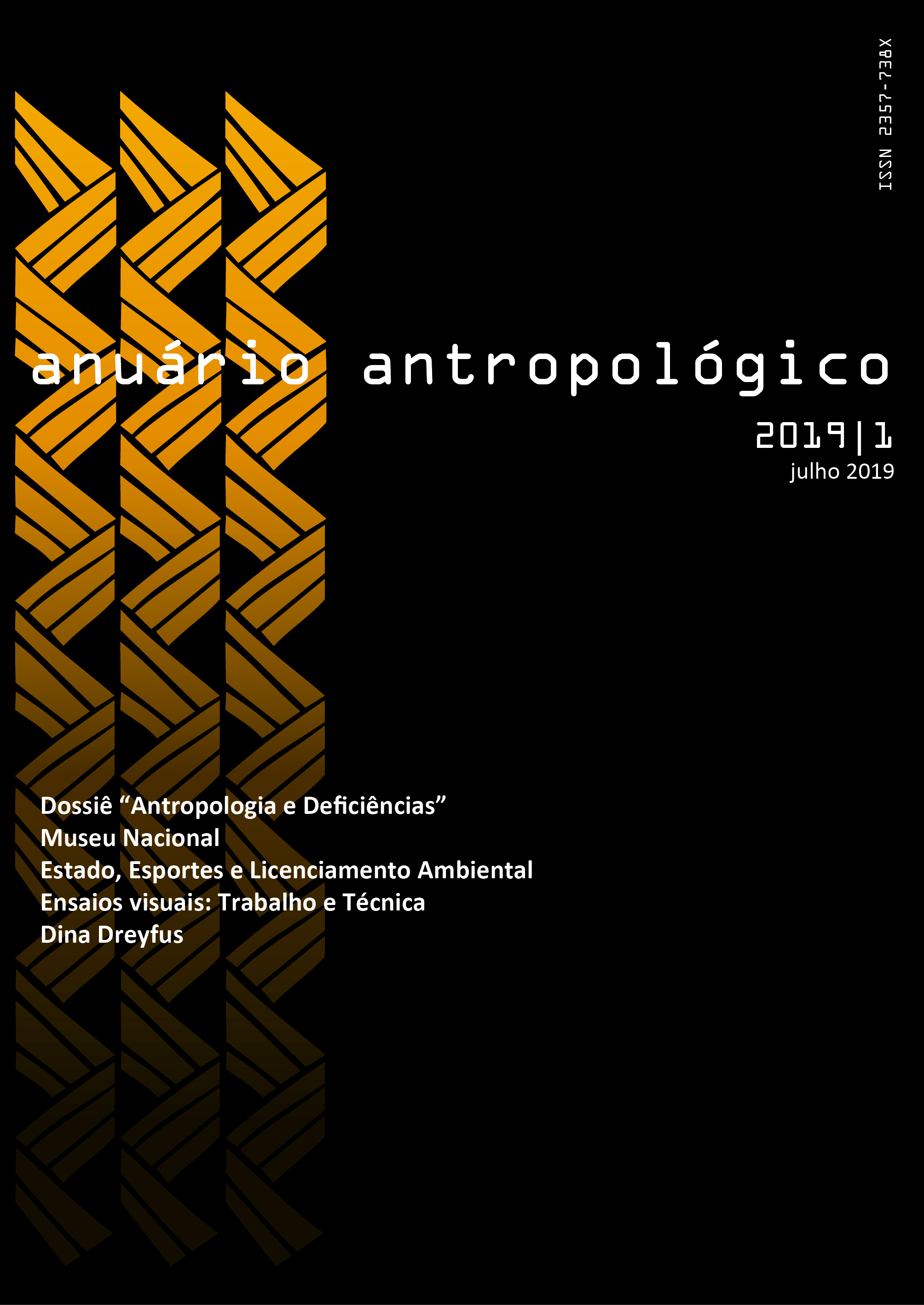A Inclusão e suas práticas
aspectos socioantropológicos da produção de materiais pedagógicos inclusivos para Surdos
DOI:
https://doi.org/10.4000/aa.3501Keywords:
políticas públicas, ensino superior, inclusão social, pessoas SurdasAbstract
The trajectory of Brazilian public policies in the last decades promoted new arrangements in educational institutions which had at its objectives the effective inclusion of people with disabilities. This article aims to describe the experience of developing didatic materials for the inclusion of a Deaf person in a higher education institution. We are interested in reflecting on the reflexivity and conflicts involving distinct points of view of the professionals from different areas of knowledge surrounding the process of elaboration of those materials and the institutional actions that conformed this conjecture. We accessed the agents involved through the methodology of networks and we point out the main guiding and transforming elements of this process. We understand that public policies are extremely important in order to generate opportunities for social change and we observe the complexity in delimiting and implementing actions to meet current social heterogeneity, and that the transformations which it provoked went beyond their explicit destinataries.
Downloads
References
CALLON, M. 1995. “Technological Conception and Adoption Network: Lessons for the CTA Practitioner”. In: RIP, A.; MISA, T. J., et al. Managing Technology in Society. London, New York: Pinter, pp. 307-330.
CARDOSO DE OLIVEIRA, Roberto. 1996. “O trabalho do antropólogo: olhar, ouvir, escrever”. Revista de Antropologia (USP), 39(1): 13-37.
Da SILVA, Marilda. 2009. Complexidade da formação de professores: saberes teóricos e saberes práticos. São Paulo: Editora UNESP.
DEDECCA, C. S. 2014. “A queda da desigualdade de renda corrente e a participação do 1% de domicílios de maior renda, 2000-201”. Revista de Economia Política, 34(2): 249-265.
FERREIRA-BRITO, Lucinda. 1995. Por uma gramática de línguas de sinais. Rio de Janeiro, RJ: Tempo Brasileiro.
FONSECA, C.; JARDIM, D.; SCHUCH, P. e MACHADO, H. 2016. “Apresentação”. Horizontes Antropológicos, 22(46): 9-34.
FOUCAULT, Michael. 2001. Os Anormais. São Paulo: Martins Fontes.
FRASER, N. 2006. “Da redistribuição ao reconhecimento? Dilemas da justiça numa era ‘pós-socialista’”. Cadernos de Campo, 14/15: 231-239.
FRASER, N.; HONNETH, A. 2003. Redistribution or recognition? A political-philosophical exchange. New York: Verso.
GESSER, A. 2009. LIBRAS? Que língua é essa? Crenças e preconceitos em torno da língua de sinais e da realidade surda. São Paulo: Parábola.
GIDDENS, A. 2007. A Constituição da Sociedade. São Paulo: Martins Fontes.
GLAT, Rosana; PLETSH, Márcia D. 2010. “O papel da Universidade no contexto da política de Educação Inclusiva: reflexões sobre a formação de recursos humanos e a produção de conhecimento”. Rev. Edu. Espec. Santa Maria, 23(38): 345 -356.
GOFFMAN, E. 2012. Estigma: Notas sobre a Manipulação da Identidade Deteriorada. 4a edição. Rio de Janeiro: LTC.
IMBERNÓN, Francisco. 2010. Formação docente e profissional: formar-se para a mudança e a incerteza. 7 ed. São Paulo: Cortez.
LATOUR, B. 2000. Ciência em Ação. Como seguir cientistas e engenheiros sociedade afora. São Paulo: Editora Unesp.
Padden & Humphries. 2006. Inside Deaf Culture. Cambridge, Massachusetts: Harvard University Press.
QUADROS, R. M.; KARNOPP, L. B. 2004. Língua de Sinais brasileira: estudos linguísticos. Porto Alegre: Artmed.
SIMMEL, G. 1983a. “A natureza sociológica do conflito”. In: MORAES FILHO, E. (Org.) Georg Simmel : sociologia. São Paulo: Ática. pp. 122-134.
______. 1983b. “Como as formas sociais se mantêm”. In: MORAES FILHO, E. (Org.) Georg Simmel : sociologia. São Paulo: Ática. pp. 46-58.
______. 1983c. “Conflito e estrutura de grupo”. In: MORAES FILHO, E. (Org.) Georg Simmel : sociologia. São Paulo: Ática. pp. 150-164.
SOUZA, A. L. S. D.; JÚNIOR, J. T. 2016. “O uso de tecnologias (TIC) na produção de material didático bilíngue libras/português na Universidade Federal de Viçosa”. Revista Fórum (INES), 33: 92-109.
TRIVIÑOS, A. N. S. 1987. Introdução à pesquisa em ciências sociais: a pesquisa qualitativa em educação. São Paulo: Atlas.
Downloads
Published
How to Cite
Issue
Section
License
Copyright (c) 2019 Anuário Antropológico

This work is licensed under a Creative Commons Attribution-NonCommercial-NoDerivatives 4.0 International License.

Creative Commons - Atribución-NoComercial-SinDerivadas 4.0 Internacional - CC BY-NC-ND 4.0




